Any links to online stores should be assumed to be affiliates. The company or PR agency provides all or most review samples. They have no control over my content, and I provide my honest opinion.
I have previously reviewed the Devolo Magic 2 WiFi 6 Whole Home Kit, and this review is for the Mesh Whole Home Kit.
It is a small but important difference. With the previous review, you have one main adaptor for the input then two WiFi adaptors which would provide WiFi 6. This would typically mean you had two WiFi SSIDs, one provided by your main router then the Devolo SSID for the rest of your home.
With the whole home mesh kit, you have three WiFi plugs. In this scenario, you would disable the WiFi on your router, and the Devolo system handles everything. This should allow you to walk around your home and seamlessly connect to each different plug. It also means you should get the best WiFi 6 speeds possible from the first plug that is wired into your router.
| Preview | Product | Rating | Price | |
|---|---|---|---|---|

| devolo MESH 2-2400 Wi-Fi 6 Whole Home Kit | 3x Magic Mesh... | Buy on Amazon |
Specification
- 3 x WiFi 6 adapters
- Powerline technology capable of speeds of up to 2400 Mbps.
- WiFi 6 enabled, bringing you 50% more WiFi power.
- 2×2 80Mhz radio for 1200Mbps WiFi 6 on 5Ghz
- Two (2) 1GbE RJ45 LAN ports on WiFi adapters
- Access point steering.
- OFDMA and MU-MIMO Technology.
- Integrated power socket for pass-through.
- Range of up to 500m.
Set-Up
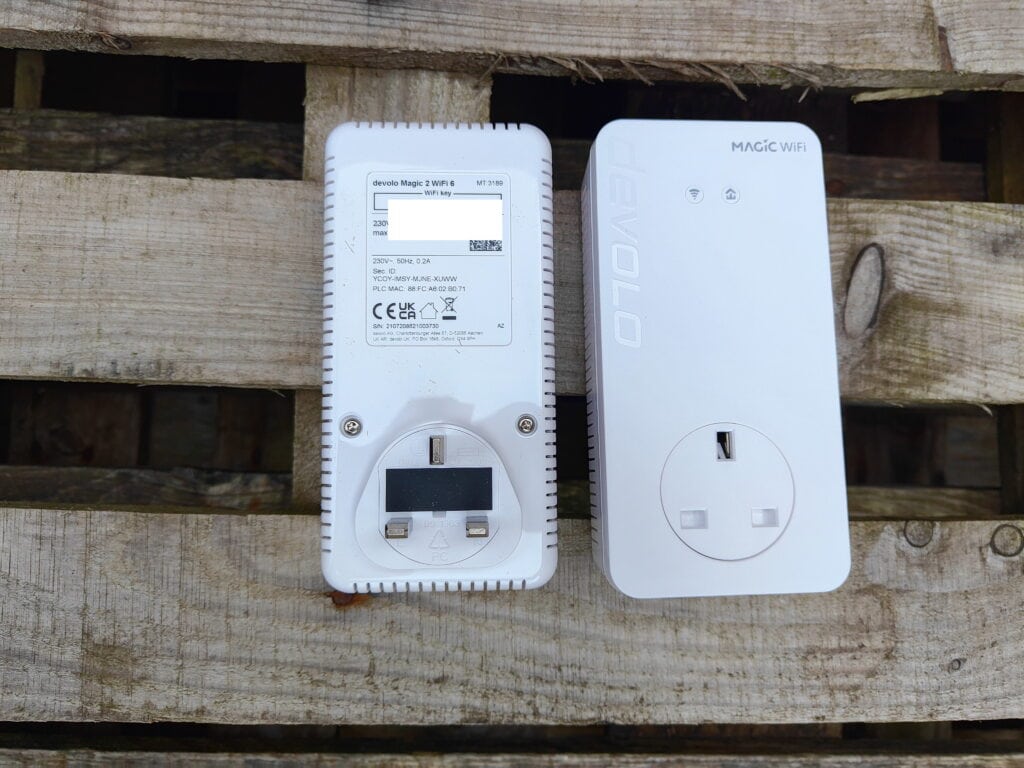

Out of laziness, I did some initial testing with as little effort as possible. I plugged the Devolo devices in, connected one plug to the router, then connected to the default SSID that Devolo creates using the password on the back of the plug.
Everything works perfectly in this scenario.
If you want to customise the settings, you can either configure the system by logging into the IP address of the plugs or using the Devolo Home Network app. I found it easier to manage everything from the browser, but I spend all day sat in front of a PC.
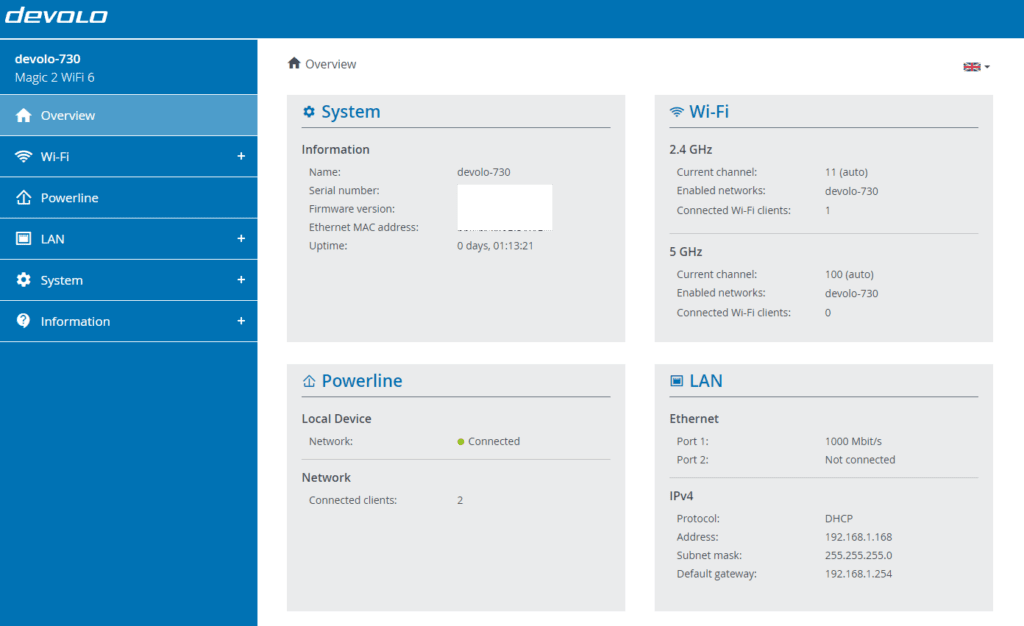
One of the selling points of a mesh WiFi system is the ability to move around your home and connect to different access points seamlessly. IEEE 802.11r (also called “Fast Roaming”) is one of the technologies responsible for this, but by default, it is switched off (like many mesh systems). It doesn’t work with all devices, particularly older devices or WPA3 encryption. However, I’d recommend switching it on.
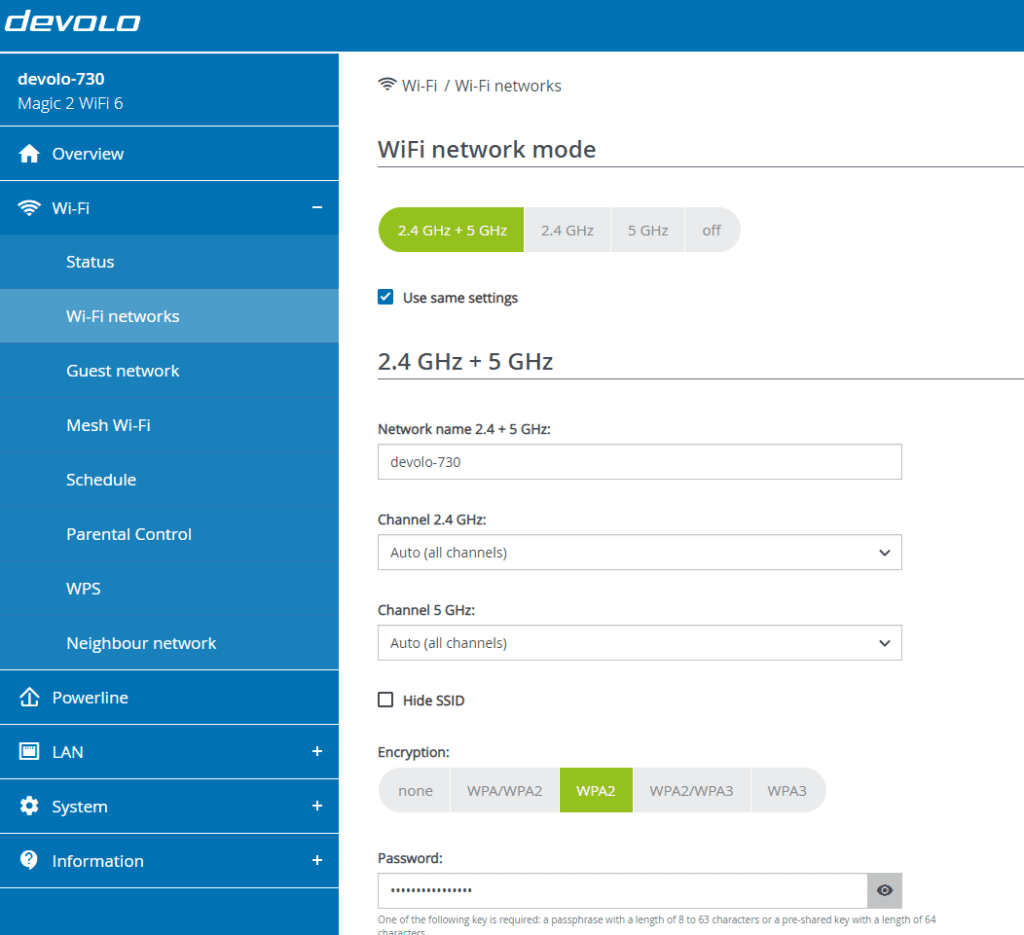
There is not a huge amount of settings to tweak. This system is not replacing your router, it only handles the WiFi. This makes it quite easy to set up and manage.
Optimising Powerline Wired Performance – MIMO VDSL 17a vs 35b vs Full Power
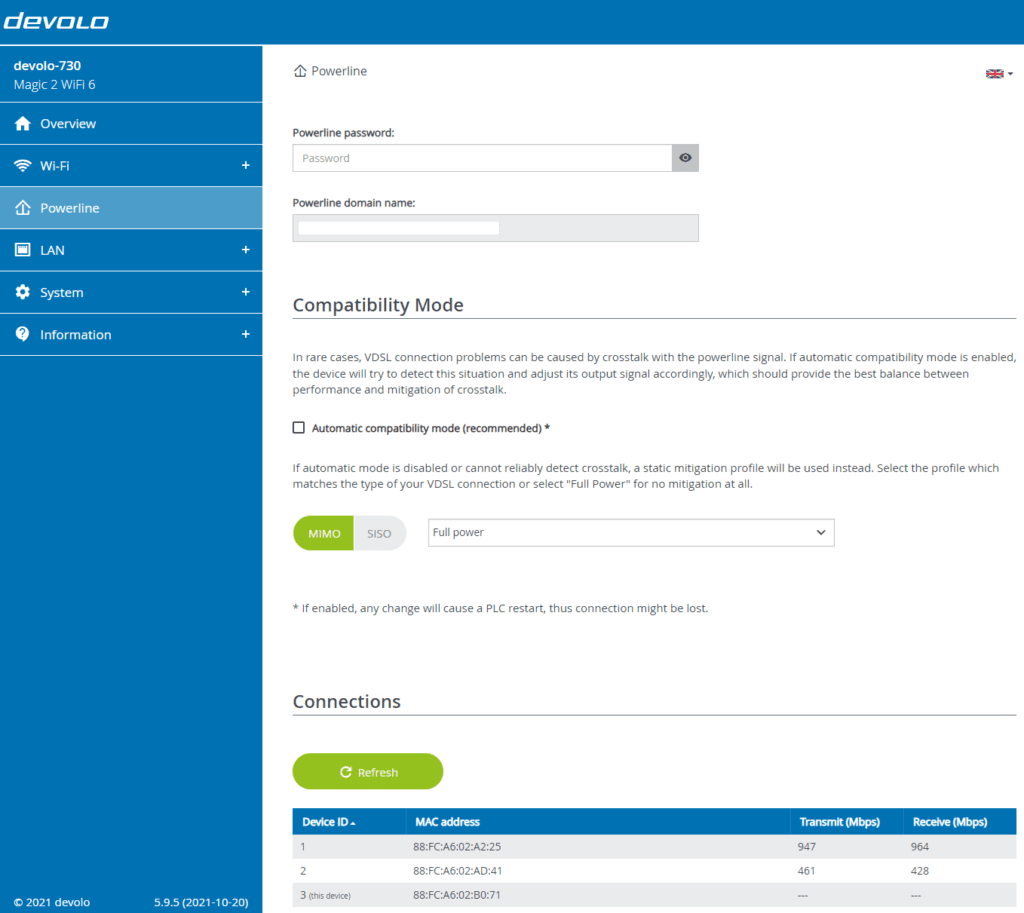
The powerline functionality has several settings you can adjust to try and improve performance. I have old home wiring, which is sub-optimal for powerline and in the past found that I needed full power to get the best possible performance.
Similarly, with all mesh and WiFi systems, it is best if you experiment with placement to get the best results. I have found this to be particularly true for powerline.
With the main plugin in my office and a WiFi plug downstairs in my front room, using MIMO VDSL 17a, I achieved a wired (and wireless) throughput of just 30 Mbits/sec.
Switching to full power, this increased to 35 Mbits/sec.
Using MIMO VDSL 35b this then dropped down to 10 Mbits/sec.
Changing my set up so the wired plug was in the front room downstairs and the powerline plug in my kitchen, which is physically further than my office to the front room. The speeds improved to 178 Mbits/sec at full power.
Finally, moving the wired plug into my main TV room in central to downstairs, speeds increased to 478 Mbits/sec. With this scenario, the Devolo system reported a massive improvement in transmit and receive speeds.
I assume there is something different between my downstairs circuit and upstairs, which is causing the differences in speeds. Unlike mesh systems that rely on a wireless backhaul, the differences with placement using powerline plugs might not be as obvious for a typical buyer.
Main WiFi Adaptor Performance
The WiFi plug that is connected directly to your router will provide the best overall performance. If possible you should locate this central in your home or in the room that’s the most important.
With this system, the WiFi 6 for clients is limited to 2×2 at 80Mhz channel width giving you a maximum theoretical speed of 1200Mbps
Using iPerf3, I was able to achieve a throughput of 825 Mbits/sec. This is on the lower end of the spectrum for WiFi 6 routers and access points. However, it is still a significant improvement on what you get with WiFi 5.
Switching to WiFi 5, I achieved speeds of 630 Mbits/sec which is on the mid to high end of the spectrum.
Powerline Connected Adaptor WiFi Performance
The WiFi speeds from the powerline connected devices were varied massively dependent on the placement discussed above. The worst-case scenario was 35 Mbits/sec.
Using the optimal placements, I was able to achieve 452 Mbits/sec from the plug located in my front room. This decreased to 299 Mbits/sec for the room directly upstairs.
In the kitchen, I achieved 278 Mbits/sec in the same room and 152 Mbits/sec in the room above.
Price and Alternative Options
Devolo Magic 2 WiFi 6 whole-home mesh kit (with three WiFi adaptors) is priced at £450.
The two-pack start kit is £300.
I’d be seriously tempted with the older WiFi 5 mesh kit, which is around £200 less than the WiFi 6 variant at £253.56.
Alternatively, the Magic 2 whole home kit is £331.35, currently.
The tri-band Netgear Orbi RBK753 is currently around £525, but it has been as low as £470 recently.
You can get the WiFi 5 tri-band Tenda MW12-3 for a bargain price of around £170
Overall
In my opinion, the Devolo Magic 2 WiFi 6 Mesh Whole Home Kit is a far superior product to the normal Magic 2 WiFi 6. Even though the price is considerably higher, it is well worth the investment.
While the Devolo Magic 2 WiFi 6 is good at what it does, I feel like it has limited appeal.
On the other hand, I think the mesh kit does exactly what most people want from a WiFI system. One single system that works seamlessly around your home.
As far as powerline vs wireless mesh backhaul goes, this is less simple. The answer seems to be your mileage may vary. In my house, which needs a full rewire, I get better results from your more typical tri-band wireless mesh system. If you have a newer property or at least modern wiring, you will likely achieve better results than me.
Even though powerline isn’t the best option for me personally, I am still a big fan of the technology. It is the only easy to implement alternative to using wireless backhaul. The other option is to run Ethernet around your home, which is incredibly inconvenient unless you are doing extensive renovations.
Devolo Magic 2 WiFi 6 Mesh Whole Home Kit Review Rating
Summary
The Devolo Magic 2 WiFi 6 Mesh Whole Home Kit is the best alternative to a mesh WiFi system that uses WiFi to communicate between each access point. The performance of this system is highly dependent on the quality of your home wiring. However, it is the most advanced powerline WiFi system on the market and will provide the best results.
Overall
75%-
Overall - 75%75%
Pros
- Plug and Play set up
- Best alternative system if you struggle with wireless backhaul
Cons
- Powerline performance is dependent on the quality of your home wiring
I am James, a UK-based tech enthusiast and the Editor and Owner of Mighty Gadget, which I’ve proudly run since 2007. Passionate about all things technology, my expertise spans from computers and networking to mobile, wearables, and smart home devices.
As a fitness fanatic who loves running and cycling, I also have a keen interest in fitness-related technology, and I take every opportunity to cover this niche on my blog. My diverse interests allow me to bring a unique perspective to tech blogging, merging lifestyle, fitness, and the latest tech trends.
In my academic pursuits, I earned a BSc in Information Systems Design from UCLAN, before advancing my learning with a Master’s Degree in Computing. This advanced study also included Cisco CCNA accreditation, further demonstrating my commitment to understanding and staying ahead of the technology curve.
I’m proud to share that Vuelio has consistently ranked Mighty Gadget as one of the top technology blogs in the UK. With my dedication to technology and drive to share my insights, I aim to continue providing my readers with engaging and informative content.
Last update on 2025-07-18 / Affiliate links / Images from Amazon Product Advertising API





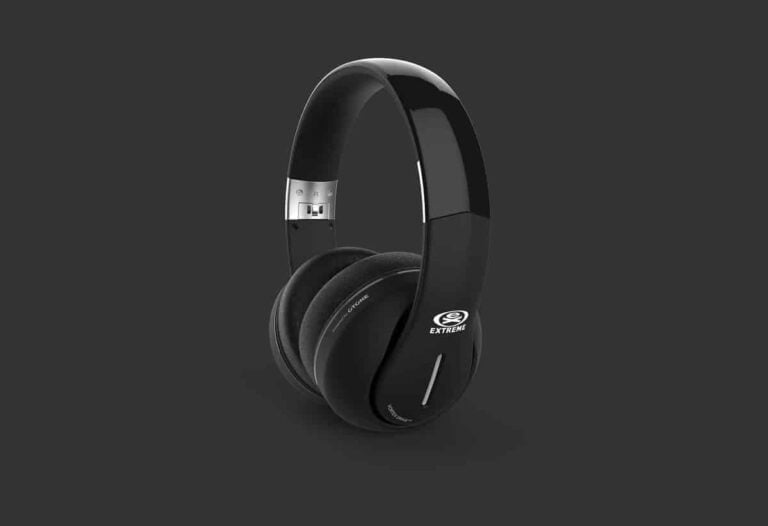

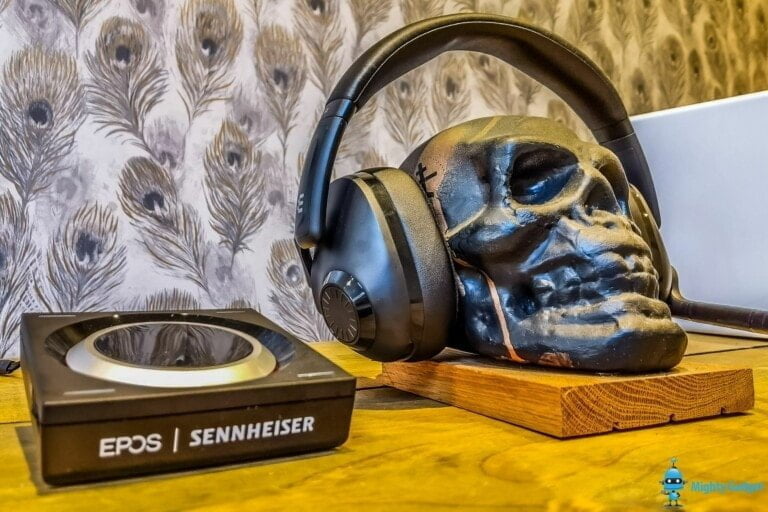

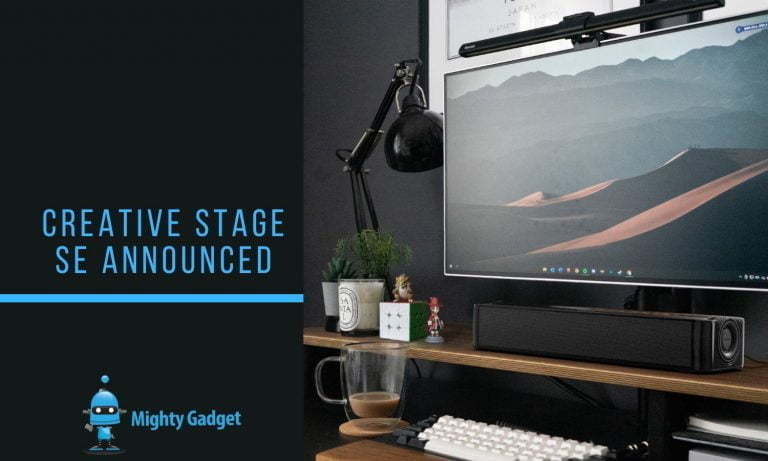
As cons you choose quality of the wiring??
Is like saying that a car is bad because of the quality of the road
Valid point, but I want to make it very clear that powerline isn’t always a very good solution. This is particularly true in the UK, where a lot of homes are old with equally old wiring.